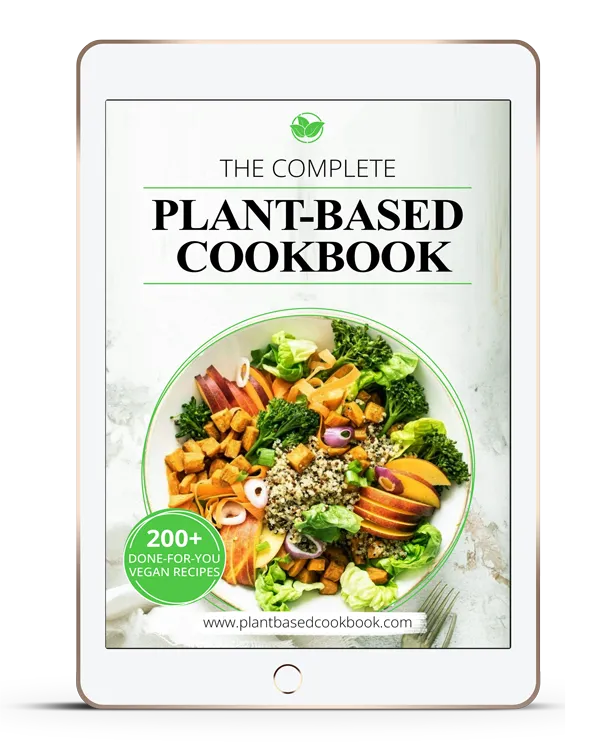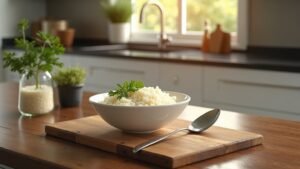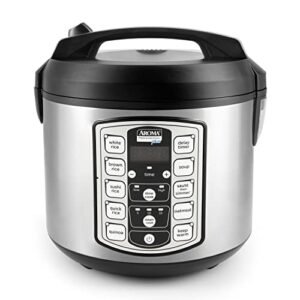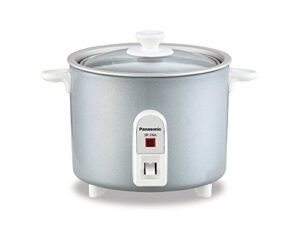Rice is one of the most consumed foods in the world, with different cultures having their own unique methods of preparing it. However, the science behind rice cooking remains the same across the globe. The perfect rice dish requires precise measurements of water and cooking time. This article will explore the science behind rice cooking, including water ratios, cooking times, and other tips to help you achieve perfect rice every time.
Table of Contents
Toggle1. Introduction
Rice is a staple food in many countries, and it comes in various types and textures. The cooking process requires proper measurement of water and time to ensure that the rice is cooked evenly and has a perfect texture. The science behind rice cooking involves understanding the water ratio, cooking time, and other factors that impact the final product.
2. Understanding Water Ratios
The water-to-rice ratio is one of the most crucial aspects of rice cooking. The ratio refers to the amount of water needed to cook a specific amount of rice. Factors such as the type of rice, cooking method, and temperature of the water impact the water ratio.
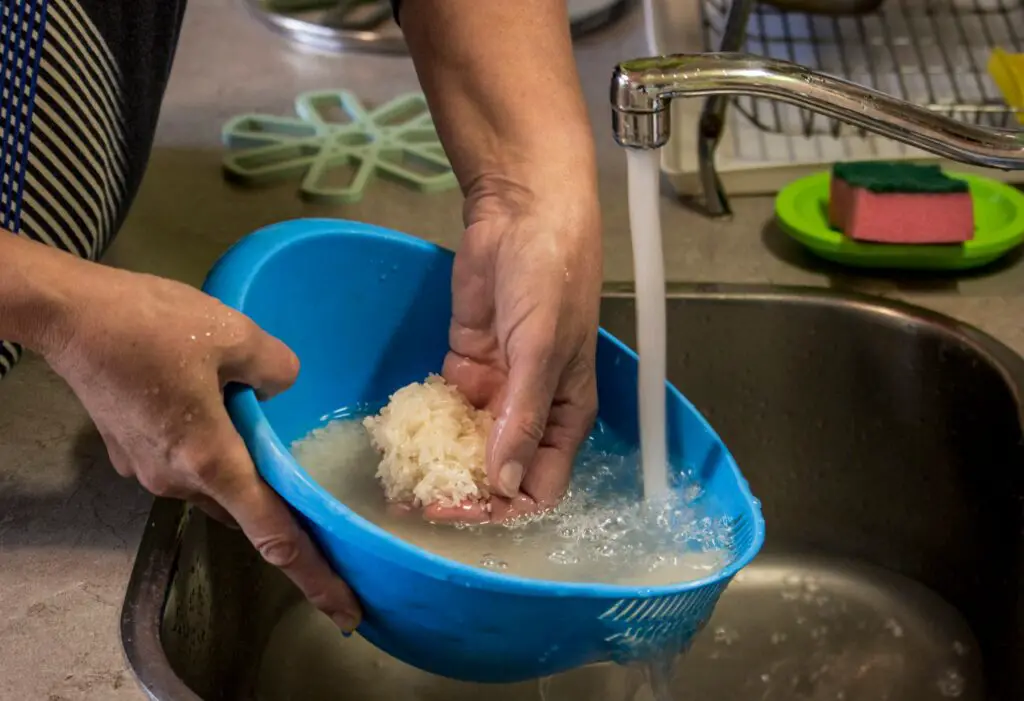
Water to Rice Ratio
One of the most important parts of cooking rice is the water to rice ratio. It establishes the rice’s firmness and texture and may have an impact on its flavour. Depending on the type of rice being cooked, the typical rule of thumb for the water to rice ratio is to utilise a 1:1.5 or 1:2 ratio.
For instance, long-grain white rice often requires a 1:1.5 or 1:2 ratio, meaning that you will need one and a half to two cups of water for every cup of rice. Conversely, short-grain white rice takes less water, often 1:1 to 1:1.25. Due to the bran layer that covers the grain, brown rice frequently needs additional water (1:2.5 or 1:3).
It’s important to remember that the water to rice ratio might vary depending on the type of rice and the cooking process. For instance, if you are cooking the rice in a rice cooker rather than on the stove, you might use less water.
The ratio of water to rice can also be impacted by temperature. While using hot water can cut down on cooking time, it can also make rice less soft. While using cold water may lengthen the cooking process, the rice may come out softer. Water at room temperature is a secure choice that will produce reliable results.
When employing the water to rice ratio, it’s crucial to measure the water and rice precisely. Too much water can make rice that is overcooked and mushy, while not enough water can make rice that is undercooked and dry.
Type of Rice
There are numerous varieties of rice, each having a distinct flavour, texture, and cooking needs. The type of rice being used is one of the criteria that decide how much water to need when cooking rice. These are some popular varieties of rice and their water needs:
Rice with a long grain, including basmati, jasmine, and white rice, needs more water to cook than other varieties of rice. With long-grain rice, a basic guideline is to use a 1:1.5 or 1:2 water to rice ratio. The rice will cook uniformly and have a fluffy texture if the ratio is followed.
Short-grain rice
Sushi rice is a type of short-grain rice, which uses less water than long-grain rice. For short-grain rice, a ratio of 1:1.25 or 1:1.5 of water to rice is optimum. Rice with short grains is stickier than rice with long grains, making it perfect for sushi and other foods that call for a sticky feel.
Brown Rice
Due to its bran layer, brown rice requires more water and time to cook than white rice. When cooking brown rice, a ratio of 1:2.5 or 1:3 water to rice is suggested. Brown rice needs an additional 45 to 50 minutes to cook compared to white rice.
Wild Rice
Technically speaking, wild rice is a sort of grass seed rather than rice. It has a chewy texture and a nutty flavour. Wild rice should be cooked with a ratio of 1:3 or 1:4 water to rice because it needs more water than white rice.
The exact amount of water required can vary based on the type of rice, altitude, and other factors. It is crucial to keep in mind that these water to rice ratios are only general recommendations. To get optimal results, it’s always a good idea to follow the directions on the rice packaging and modify the water ratio as necessary.
Temperature of Water
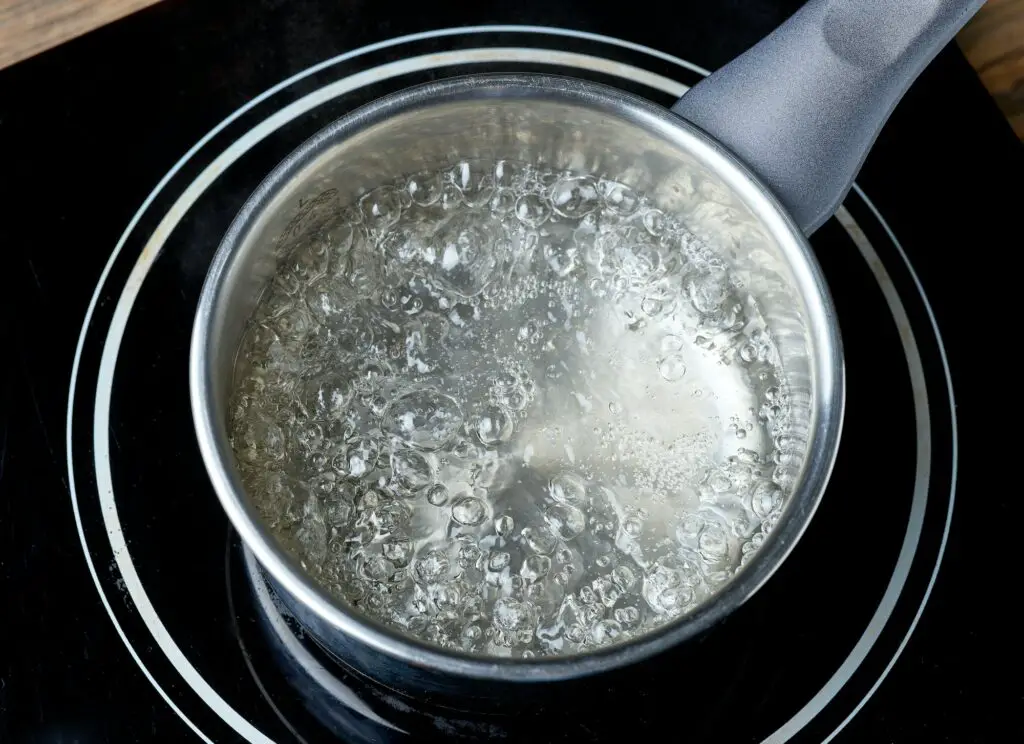
The temperature of the water used when cooking rice is another factor that can impact the final product. The temperature of the water can affect the cooking time and the texture of the rice. Here’s what you need to know about the temperature of water when cooking rice:
- Hot water: Using hot water can speed up the cooking time, but it may result in rice that is less tender. When you use hot water, the rice grains on the surface can start cooking faster than the grains in the center, resulting in unevenly cooked rice.
- Cold water: Using cold water may result in longer cooking times, but it can produce rice that is softer and more tender. When you use cold water, the rice grains will cook at a slower pace, allowing them to absorb more moisture and cook evenly.
- Room temperature water: Using room temperature water is a safe option that will give you consistent results. This temperature of water will not affect the cooking time significantly, and the rice will be evenly cooked and tender.
The temperature of the water used to cook rice can impact the texture and consistency of the final product. Using hot water can speed up the cooking time but may result in less tender rice, while cold water can produce softer rice but will take longer to cook. Room temperature water is a safe option that will give you consistent results and should be used if you’re unsure about the ideal temperature for the water. Regardless of the temperature of water used, it’s crucial to ensure that the water to rice ratio is correct to achieve perfect results.
3. Cooking Time
The cooking time of rice varies depending on the rice type, the water ratio, and the cooking method. The most common cooking methods for rice are boiling and steaming.
Cooking Methods
Boiling and steaming are the two most common methods for cooking rice.
Boiling rice involves adding the rice and water to a pot and bringing it to a boil over high heat. Once the water starts boiling, reduce the heat to low, cover the pot, and let the rice simmer until the water is absorbed. This method is suitable for most types of rice, including white, brown, and long-grain.
Steaming rice involves cooking the rice with water in a covered pot over low heat. This method requires less water than boiling and is often used for sushi rice and other short-grain varieties.
To steam rice, add the rice and water to a pot, cover it, and bring it to a boil over high heat. Once boiling, reduce the heat to low and let the rice cook for 18-20 minutes until the water is absorbed. Steaming rice typically takes longer than boiling, but it can produce rice that is fluffier and has a more delicate texture.
Some people use a rice cooker to steam rice, which automates the cooking process and produces consistent results every time.
Resting Time
Resting time is an important step in the rice cooking process that should not be overlooked. It refers to the time that the cooked rice is left to sit and rest before it is served. Resting time is important because it gives the rice a chance to soak up any extra water and helps it get fluffier and cook more evenly.
When cooked, rice becomes sticky and clumpy because the carbohydrates within the grains have absorbed water. When it’s cooked, rice is still quite hot and contains excess moisture that needs to be absorbed before it can be served. While resting, the rice cools and soaks up any remaining liquid in the saucepan. The steam generated within the pot completes the cooking process and equally lubricates each grain of rice.
Resting time can range from 5-10 minutes, depending on the quantity of rice being cooked. It’s essential to keep the pot covered during this time to avoid losing any of the steam that is essential to the resting process. If the rice is left uncovered, the steam will escape, and the rice will become dry and lose its fluffy texture.
Aside from letting the rice soak up water, letting it sit for a while also lets the flavors develop and settle into the rice, making it more tasty and flavorful. After the resting time, the rice is fluffier, and each grain is separate and distinct from the others, making it easier to eat and more visually appealing.
Apart from the water ratio and cooking time, there are other tips you can follow to make perfect rice every time.
Rinsing Rice
Rinsing rice is a crucial step in preparing rice that is fluffy and delicious. Rice grains can contain dust, dirt, and debris from the harvesting and packaging process, and they also contain starch that can make the rice sticky and clumpy. Rinsing rice helps to remove these impurities and excess starch, resulting in better-tasting rice that is less sticky and clumpy.
Here’s everything you need to know about rinsing rice:
- Why rinse rice? Rinsing rice serves two primary purposes: to remove impurities and excess starch. Removing impurities, such as dirt and debris, ensures that the rice is clean and safe to eat. Excess starch can make the rice sticky and clumpy, which can be undesirable in certain dishes. Rinsing rice helps to remove these impurities and excess starch, resulting in better-tasting rice that is easier to cook and handle.
- How to rinse rice: Rinsing rice is a straightforward process. First, put the rice in a fine-mesh strainer and rinse it under cold running water. The water should run through the rice and the strainer until it is clear. This process should take a few minutes, and it’s important to rinse the rice thoroughly to ensure that all impurities and excess starch are removed.
- When to rinse rice: Rice should be rinsed before cooking, except for some types of rice, such as sushi rice, which should be rinsed after cooking. Rinsing before cooking removes impurities and excess starch, resulting in better-tasting rice. Rinsing after cooking helps to remove any residual dirt or debris.
- Exceptions to rinsing rice: Some types of rice, such as arborio rice, should not be rinsed before cooking because they require the starch to make risotto creamy. Additionally, pre-washed rice does not need to be rinsed.
Fluffy, tasty, and safe to consume rice can’t be made without first rinsing the grains thoroughly. Getting rid of the extra starch and debris with a quick rinse makes for more manageable and flavorful cooked rice. Put the rice in a fine-mesh strainer and pour cold water over it, making sure to get all of the grit out of the grains. However, there are cases in which rinsing rice is not required, so it is best to check the package directions before you begin.
Soaking Rice
Soaking rice is a technique that can help to reduce cooking time and make the rice softer. This process involves soaking the rice grains in water for a period of time before cooking them. Here’s everything you need to know about soaking rice:
- Why soak rice? Soaking rice can help to reduce cooking time by up to 20%. Additionally, soaking can help to make the rice softer and more tender, especially for brown rice, which can take a longer time to cook than other types of rice.
- How to soak rice: Soaking rice is a simple process. First, rinse the rice under running water to remove any dirt or debris. Then, place the rice in a bowl and add enough water to cover it completely. Allow the rice to soak for at least 30 minutes, but preferably for 2-4 hours. After soaking, drain the rice and rinse it thoroughly with water before cooking.
- When to soak rice: Soaking rice is particularly useful for brown rice, which can take longer to cook than other types of rice. However, it can also be used for other types of rice, such as jasmine and basmati, to reduce cooking time and improve texture.
- Exceptions to soaking rice: Some types of rice, such as sushi rice, should not be soaked before cooking because it can affect the texture and consistency of the rice.
So, as you can see, soaking rice is a technique that can help to reduce cooking time and make the rice softer and more tender. Soaking is particularly useful for brown rice, which can take a longer time to cook than other types of rice. To soak rice, rinse it under running water, place it in a bowl with enough water to cover it completely, and allow it to soak for at least 30 minutes before draining and rinsing thoroughly. However, it’s important to read the package instructions to determine whether soaking is necessary for the specific type of rice you’re cooking.
Using a Rice Cooker
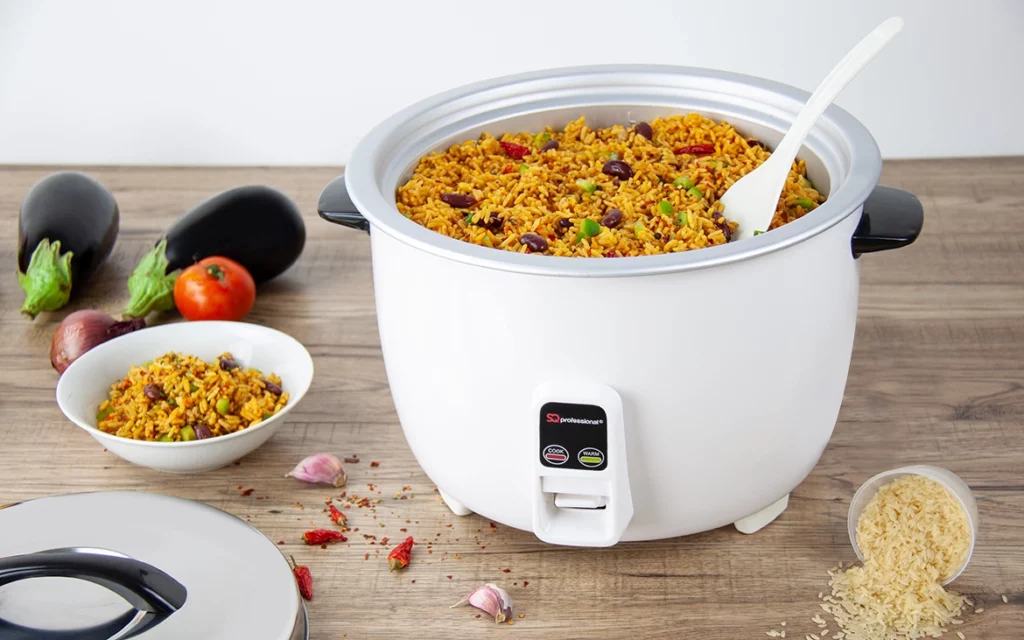
Using a rice cooker is an excellent way to cook perfect rice every time. Rice cookers are convenient kitchen appliances that automatically adjust the cooking time and water ratio, making it easier to achieve the desired texture and consistency.
Here are some of the benefits of using a rice cooker:
- Convenience: Rice cookers are easy to use and require minimal effort. Simply add the rice and water to the cooker, press a button, and wait for the rice to cook. The rice cooker will automatically adjust the cooking time and water ratio to ensure that the rice is perfectly cooked.
- Consistency: Rice cookers provide consistent results every time, as they automatically adjust the cooking time and water ratio based on the amount of rice being cooked. This ensures that the rice is cooked evenly and is not overcooked or undercooked.
- Time-saving: Using a rice cooker can save time in the kitchen, as you don’t have to worry about monitoring the rice while it cooks. This frees up time to prepare other dishes or attend to other tasks.
- Multi-functionality: Many rice cookers have additional functions, such as steaming vegetables, cooking soup, and making porridge. This makes them versatile appliances that can be used for a variety of dishes.
When using a rice cooker, it’s essential to follow the instructions provided by the manufacturer. Different types of rice may require different water ratios and cooking times, so it’s important to adjust accordingly. Additionally, it’s important to clean the rice cooker after each use to ensure that it functions correctly.
Cooking perfect rice requires an understanding of the water ratio, cooking time, and other factors that impact the final product. By following the tips in this article, you can cook rice that is evenly cooked, fluffy, and full of flavor.
6. FAQs
- Why is the water to rice ratio important?
- The water to rice ratio determines the texture and consistency of the rice.
- Can I use hot water to cook rice?
- While it may result in faster cooking times, using hot water can result in less tender rice.
- Why do I need to rinse rice before cooking?
- Rinsing rice helps to remove excess starch and impurities that may affect the taste and texture of the rice.
- How long should I let the rice rest before serving?
- Letting the rice rest for 5-10 minutes allows it to absorb any excess moisture and become fluffier.
- Can I use a rice cooker for different types of rice?
- Yes, most rice cookers have settings for different types of rice and adjust the water ratio and cooking time accordingly.




